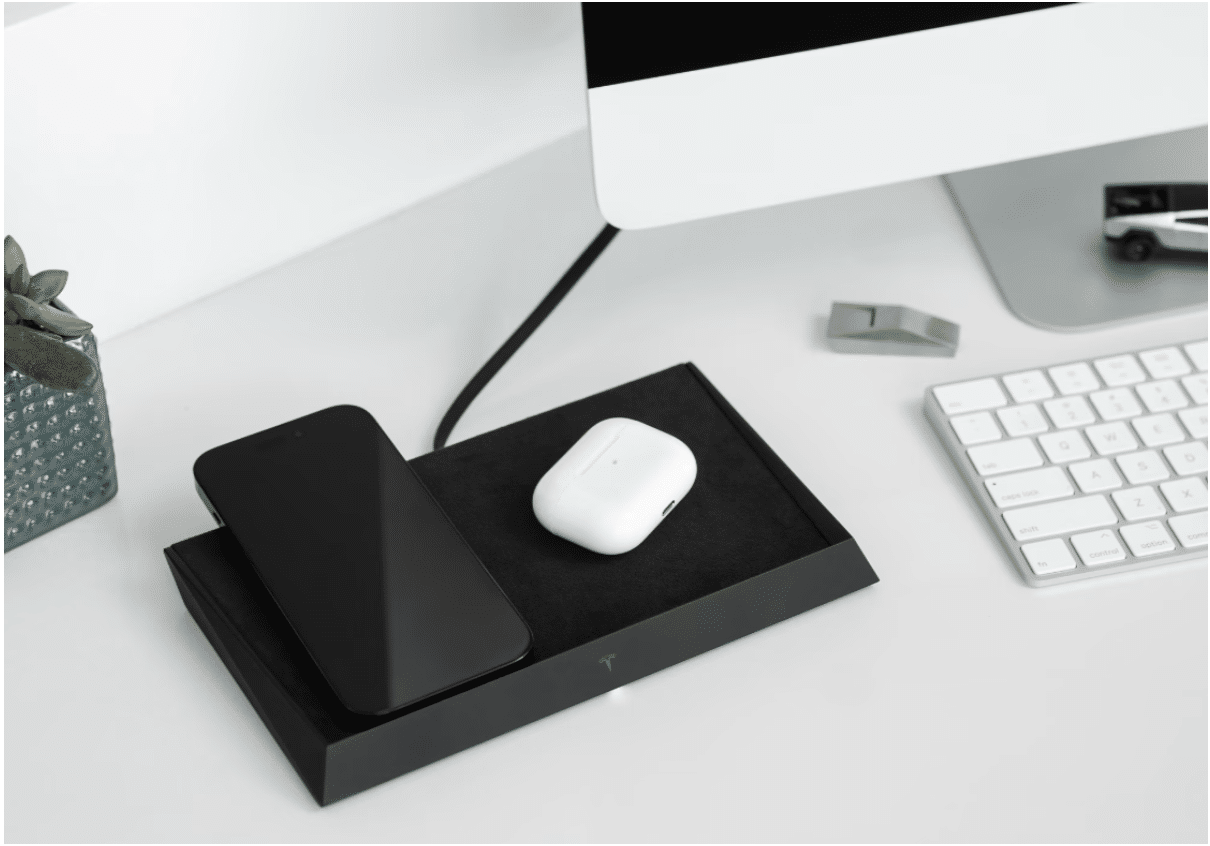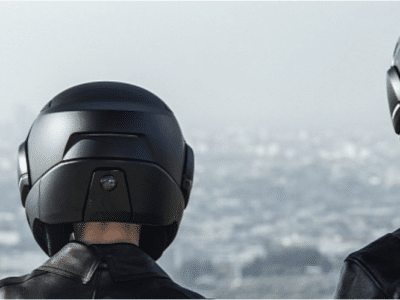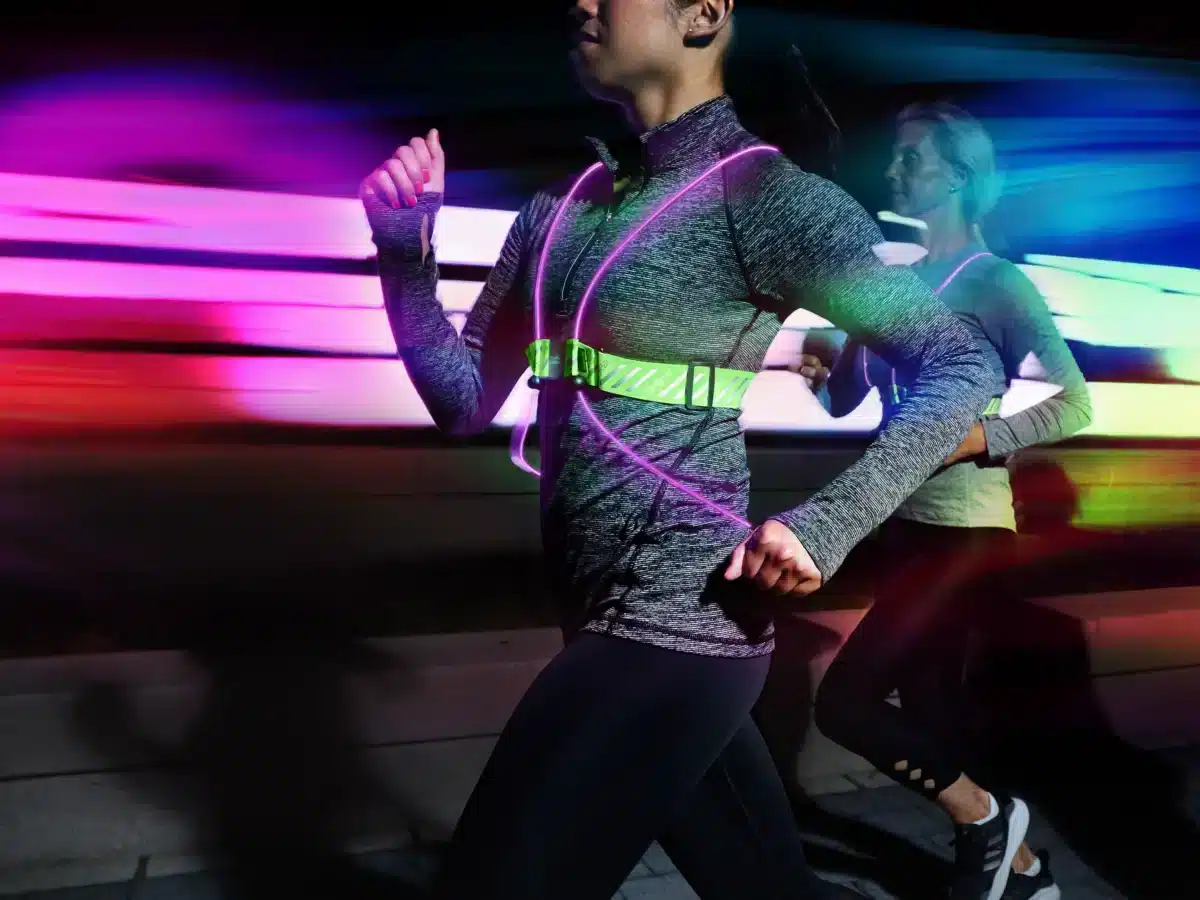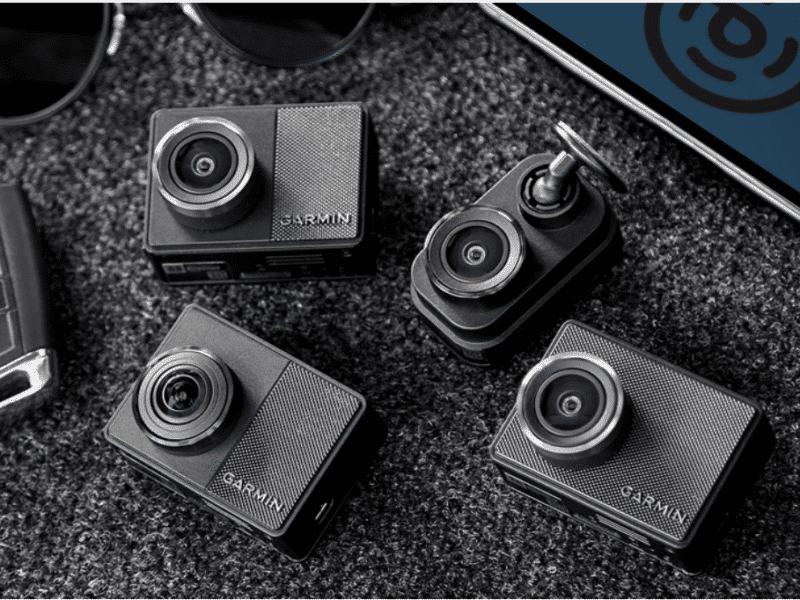Tesla is shipping its wireless charging platform. The cyberttruck-styled charging mat is said to deliver up to 15W of power to your devices. The charging mat can accommodate any Qi-certified gadgets, including iPhones and AirPods cases, but not Apple Watches.
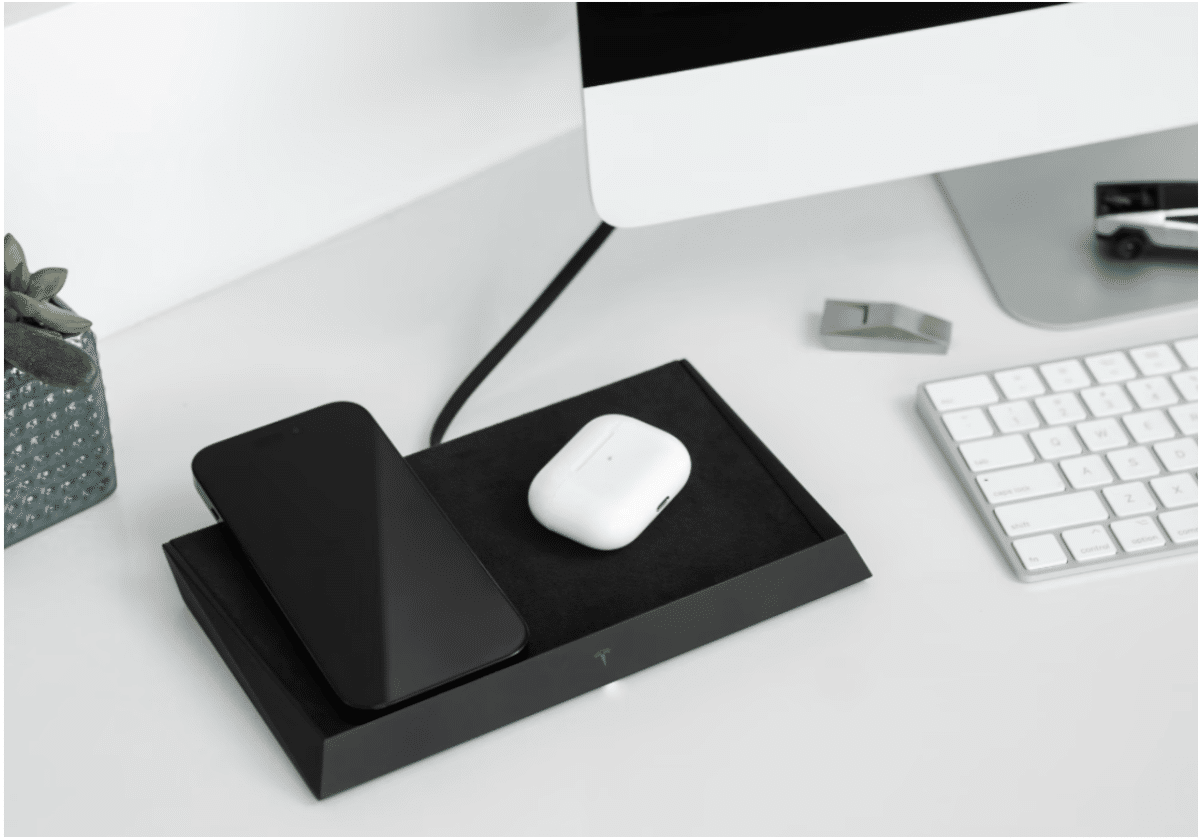
Experts believe the Tesla charging pad can charge up to three devices at a time without you needing to place them in specific spots on the mat. This feature draws comparison with the cancelled Apple’s AirPower. However, both are different in charging technology and the number of coils. Also, Tesla’s charger is heavier than Apple’s AirPower.
But where Tesla’s wireless charging platform raises the most question is its price. The average charging mat in 2023 costs between $20 to $30. In fact, the Longitech Powered Pad, considered one of the best Qi-wireless charging pads, starts at $30 on the website. The ZealSound Wireless Charging Pad costs around $40.
Tesla’s charger at $300 is ridiculously expensive, doubling the price of the priciest charging pad in the market. But the cost will not be a bother if it reflects in value. In this review, I answer the question, “Is Tesla’s wireless charging platform worth the price? Let’s check if my answer aligns with yours.
Pros
- Compatible with Qi-certified devices (excluding Apple Watches)
- Charges up to three devices simultaneously
- Free-placement charging with 30 Qi-charging coils
- 15W fast charging per device (45W in total)
- Sturdy and well-made aluminum design with Cybertruck-inspired angular shape
- Magnetic stand allows for angled or flat positioning
Cons
- High price ($300) compared to competitors
- Heavier than other charging pads (1.02kg with stand)
- Apple Watch compatibility is not supported
- iPhone charging speed may be limited to 7.5W due to Apple software tweaks
Design and Aesthetics
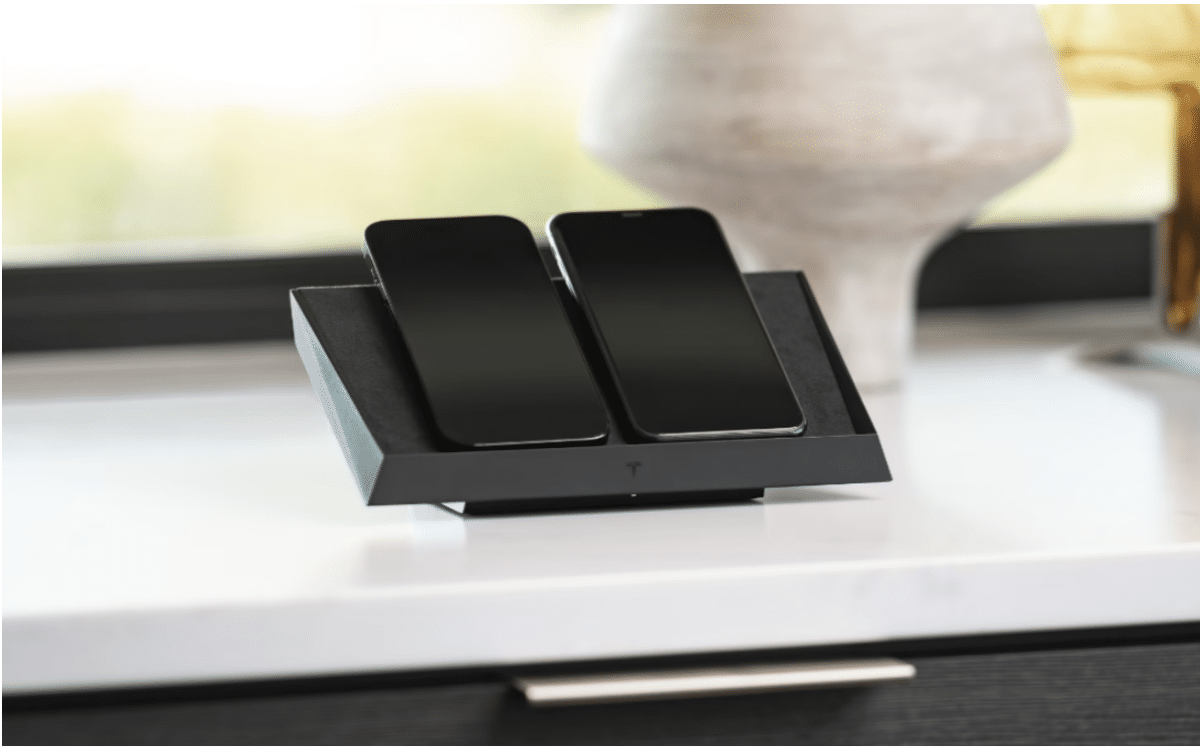
A look at Tesla’s wireless charging platform confirms its density and solidity. In measurement, it weighs 747 grams and is about 220mm wide. When you include the magnetic stand that props it up at an angle, the entire charging platform is 1.02kg, which is about the size of a small laptop or a bag of sugar.
Feeling the body of the charger, you get to see that it is made of aluminum. While some people would have preferred lithium, aluminum is cost-effective, sustainable, and allows a charger to offer ultra-fast charging. It also makes the charger sturdy and well-made. The only fault is aluminum adds to weight, so you can expect Tesla’s charging mat to be one of the heaviest in the market.
Tesla Cybertruck, an electric light-duty truck, inspired the design of the wireless charging platform. The truck has this unique angular shape, which is transferred to the charging platform. The charger’s profile looks shiny with an industrial matte black frame. Aside from being made of aluminum, it boasts an alcantara surface. In short, the angular shape makes it Tesla-like, different from other charging pads.
And then, there is the magnetic stand, which, to me, is a thoughtful addition to the build and aesthetic of the platform. If you use the stand, you can slightly prop up the charger and make it appear desk-like or serve as a nightstand. If you’re not sticking to this accessory, you can lay the charger flat on your desk.
What I believe anyone might find difficult is the gloss-black Tesla logo. It’s subtle, yet significant. Stamped at the front of the charging pad, the stylized “T” doesn’t come out obvious. I take this to mean an attempt at design minimalism.
Charging Speed and Power
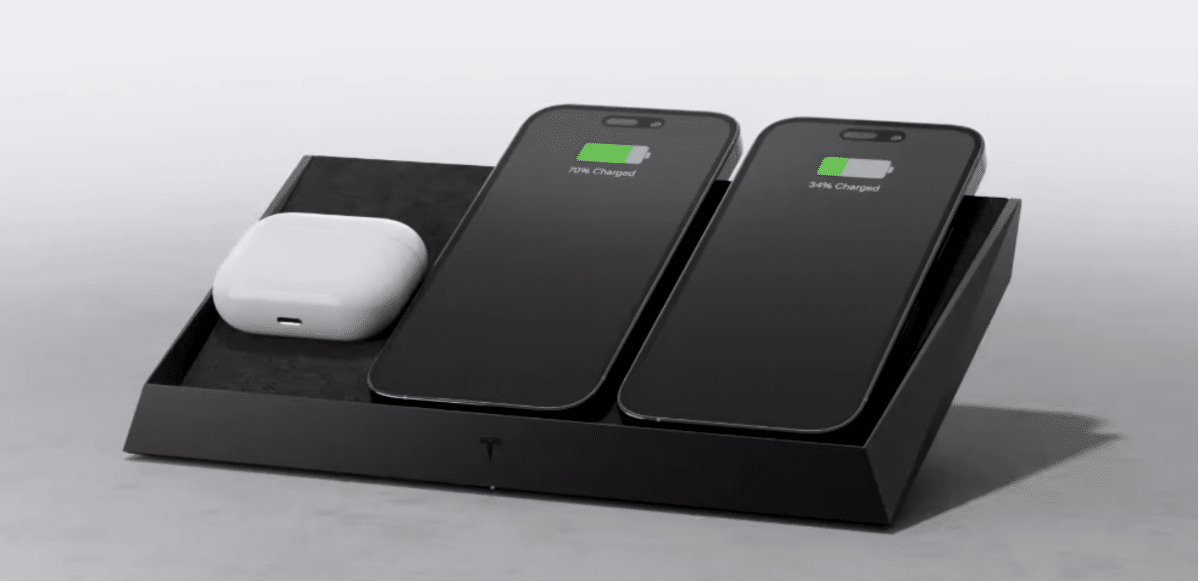
Tesla’s charger comes with 30 Qi-charging coils embedded beneath its surface. This feature allows you to power up to three devices at a time, a device away from the standard. While there are other charging pads with a high number of coils, such as the Zens Liberty with 16 coils, Tesla’s charger boasts the highest number and can charge the most devices.
In terms of charging power, Tesla’s charging platform provides 15W of fast charging power per device, including Android and iPhone. This means if you’re charging three devices at a time, you get access to about 45W in total. Its charging speed matches Belkin Boost Charge Pro Portable Wireless Charger Pad with MagSafe and is similar to many Qi chargers available in the market.
The most interesting part about Tesla’s wireless charging platform is its free-placement, Qi-charging feature. Thus, it uses FreePower technology to charge your devices without you having to align them to the charging coils. So, you only have to place them anywhere and anyhow you want. Unlike other charging pads, this feature makes your charging process simple and intuitive.
Hands-on experience shows that when you place a device on the charging platform, a light blinks brightly and then dimly to show that the device is charging. If you pay close attention, you’ll realize that the light also slightly points downward to not interfere with your sight.
Functionality and Ease of Use
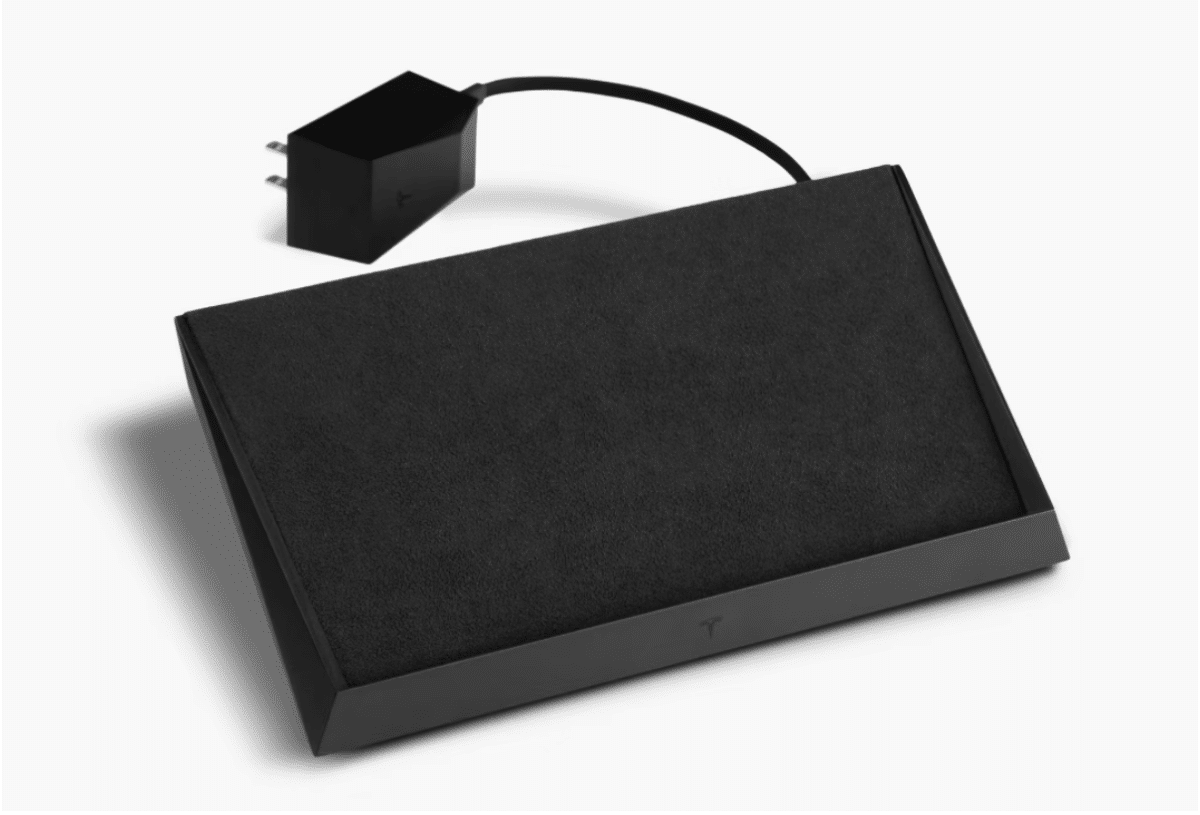
I’ve never seen a non-functional Tesla product, so I expect the wireless charging platform to be the same. By functionality, I’m talking about the charger’s use cases, literally answering the question, “What can Tesla’s charger do?” According to Tesla, you can use the qi wireless charger to power your earbuds, phones, and smartwatches. Besides, it works with MagSafe and non-MagSafe gadgets.
Usually, you get to charge two phones and a pair of wireless earbuds with Tesla’s qi charger. But note that you can’t charge Apple watches as they’re incompatible due to Apple’s proprietary standards. Essentially, you can use the Tesla Wireless Charging Platform with any devices that have wireless charging capabilities and support regular Qi wireless charging.
About the ease of use, Tesla’s qi charger is flexible and easy to use. You only have to place your devices wherever you wish to power them. However, you need to be mindful of how you go about charging your gadgets. Most charging pads tend to heat up when you power two to three devices, and Tesla’s wireless charging platform is no exception.
The charger’s ease is further amplified by the magnetic stand, which you certainly cannot miss. The stand, also made of aluminum, magnetically helps ensure your charging platform does not fall apart. It packs enough punch of support, solidified by silicone, grooves, and weight, to keep the platform in place.
Compatibility with Devices
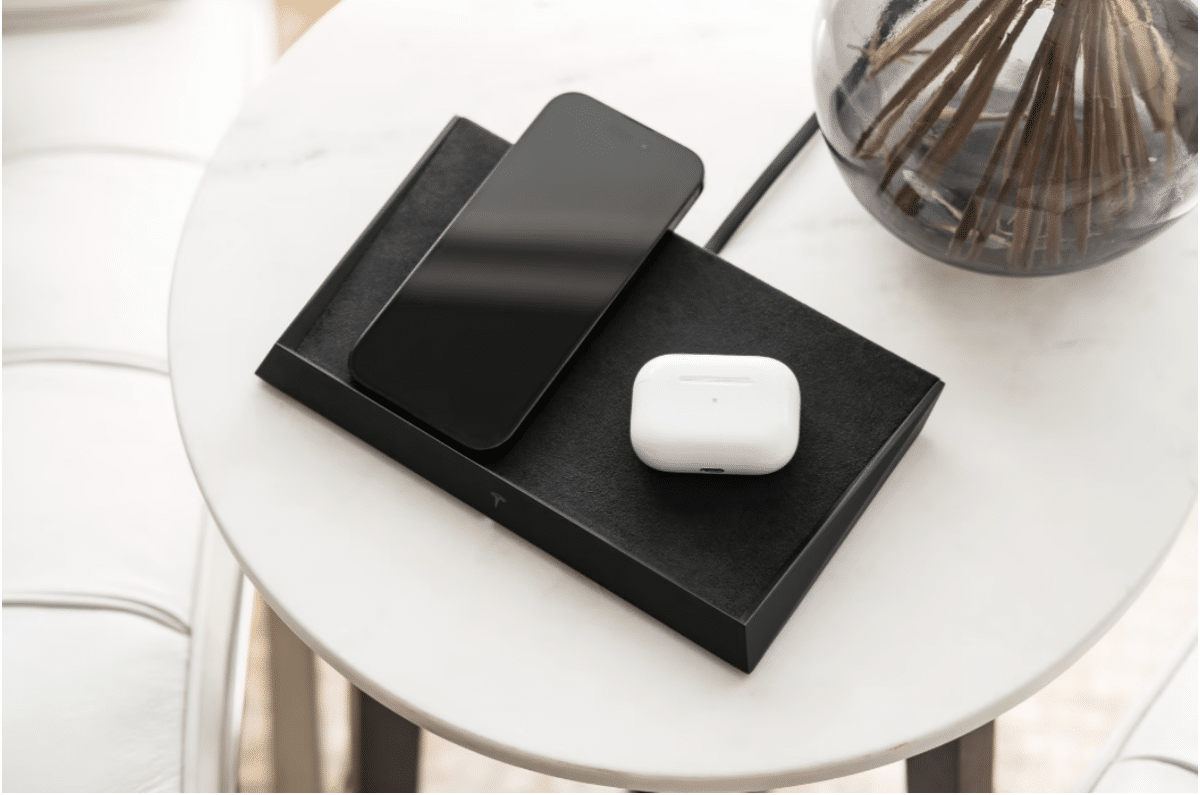
Tesla wireless charging platform is compatible with Android and iphone devices. Android devices that support its power level can receive its 15W package. iPhones, on the other hand, may be limited to 7.5W speeds due to software tweaks and alterations by Apple. Tesla also charges your wireless earbuds.
Some of the compatible phones include iPhone 8 or later plus Galaxy: Note9, S9, S9+, Note8, S8, S8+, S7, S7 edge, Note5, S6 edge+, S6 edge, S6, and various Qi-certified phones from other manufacturers. Supporting earbuds may include Google, Samsung Galaxy, and Apple’s earbuds.
Additional Features and Accessories
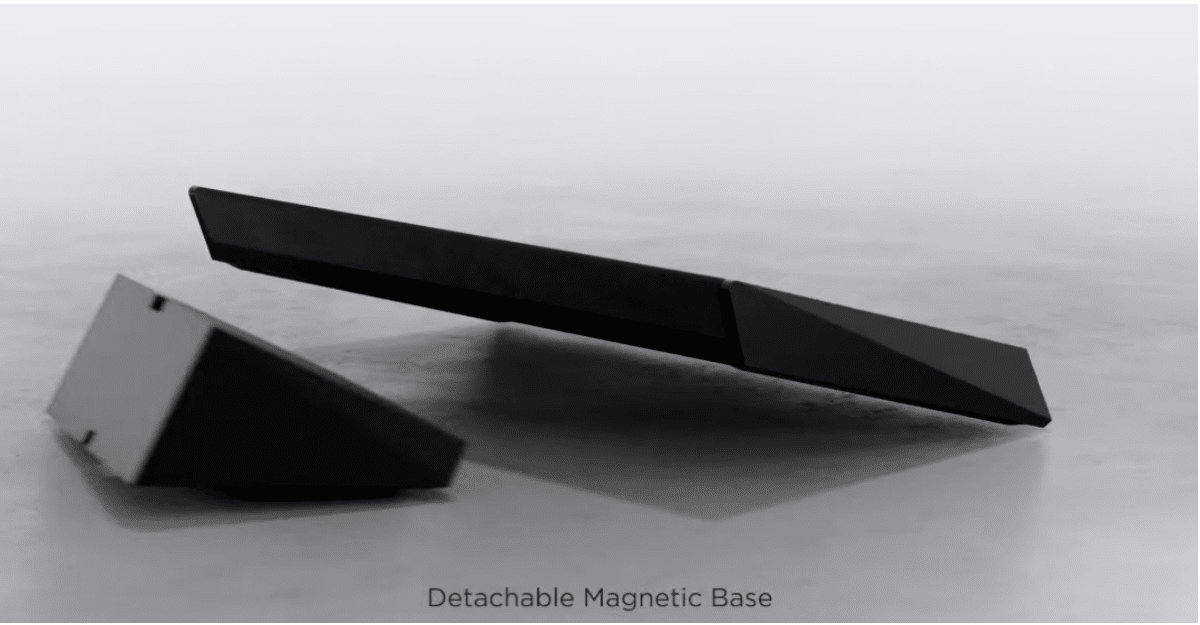
In addition to the charging platform and the magnetic stand, Tesla’s qi charger comes with a USB-C cable integrated with the wireless charger and a 65W USB-C power adapter. The non-removable USB-C cable is flat-style and connects the charging pad to the power adapter. The adapter provides power to the pad, delivering up to 65 watts.
Price and Value for Money
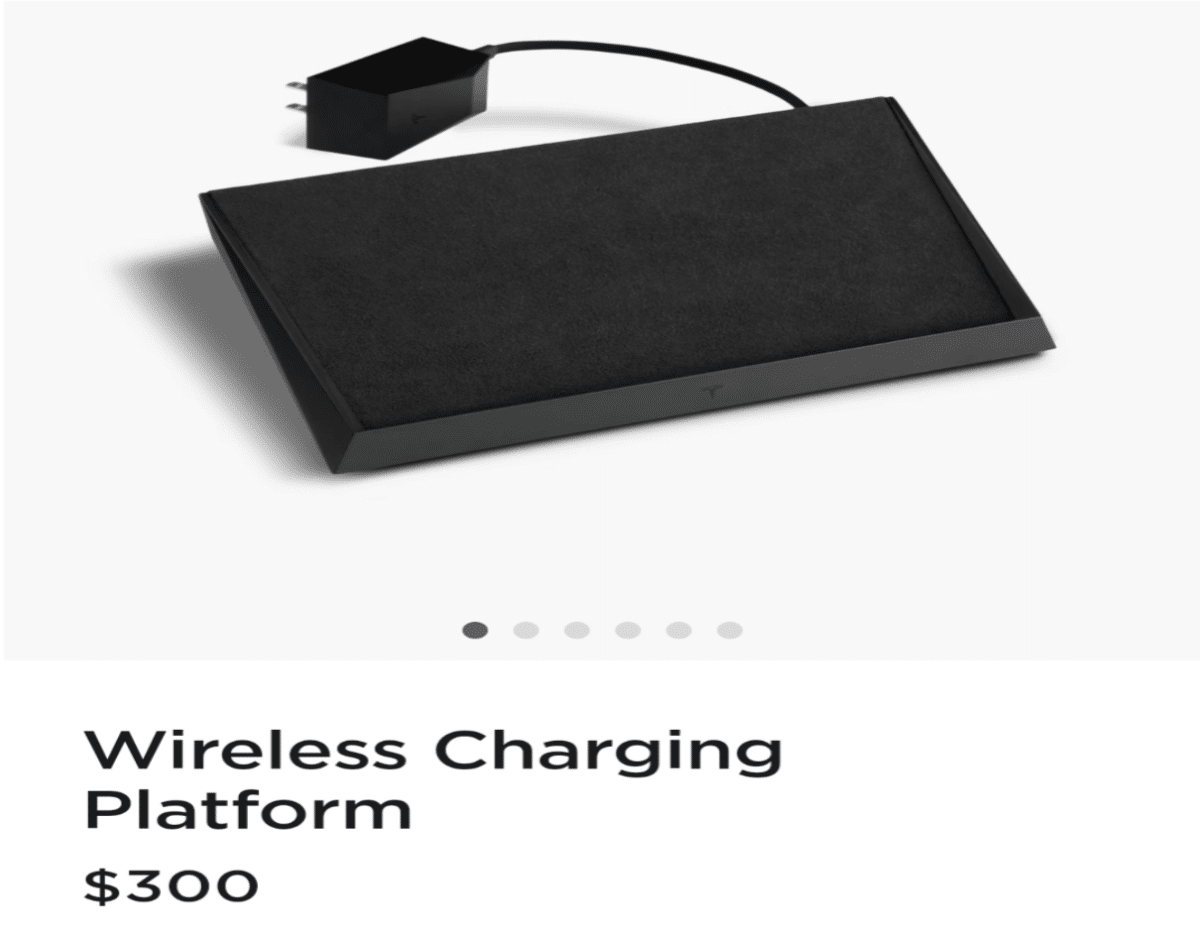
At $300, Tesla wireless charging platform is the most expensive qi charging pad I know. It’s so expensive that it doubles the price of the priciest charging mat on most tech platforms’ list of the best wireless charging pads. However, it does offer value for its money especially in terms of build and design.
Most experts believe the price is driven up by the fact that it’s produced by Tesla and has a Tesla logo. Call it branding or copyright price. But that doesn’t seem right to me. The price is up due to the need to capitalize on a market with no direct influential competitors and to flex muscles on a failed Apple attempt at sustaining AirPower.
Pros of Tesla Charging Platform
- Compatible with Qi-certified devices (excluding Apple Watches)
- Charges up to three devices simultaneously
- Free-placement charging with 30 Qi-charging coils
- 15W fast charging per device (45W in total)
- Sturdy and well-made aluminum design with Cybertruck-inspired angular shape
- Magnetic stand allows for angled or flat positioning
Cons of Tesla Charging Platform
- High price ($300) compared to competitors
- Heavier than other charging pads (1.02kg with stand)
- Apple Watch compatibility is not supported
- iPhone charging speed may be limited to 7.5W due to Apple software tweaks
Should You Buy Tesla Wireless Charging Platform?
Well, it’s your choice. The charging platform boasts advantages and disadvantages. To its merit, the benefits outweigh the flaws. It’s the most powerful free-placement qi-wireless charger I’ve seen. Also, it features solid charging speed, awesome designs, and an optional magnetic stand. It can power devices, especially Android, up to 15W.The flaws, for me, are in its price. I find the cost ridiculously expensive and capitalizing. Unless you have the money, I’ll recommend going for cheaper charging pads with almost the same features. Besides, I do not recommend the Tesla’s charger for iPhone users as the charging speeds are not the same as with Android.

